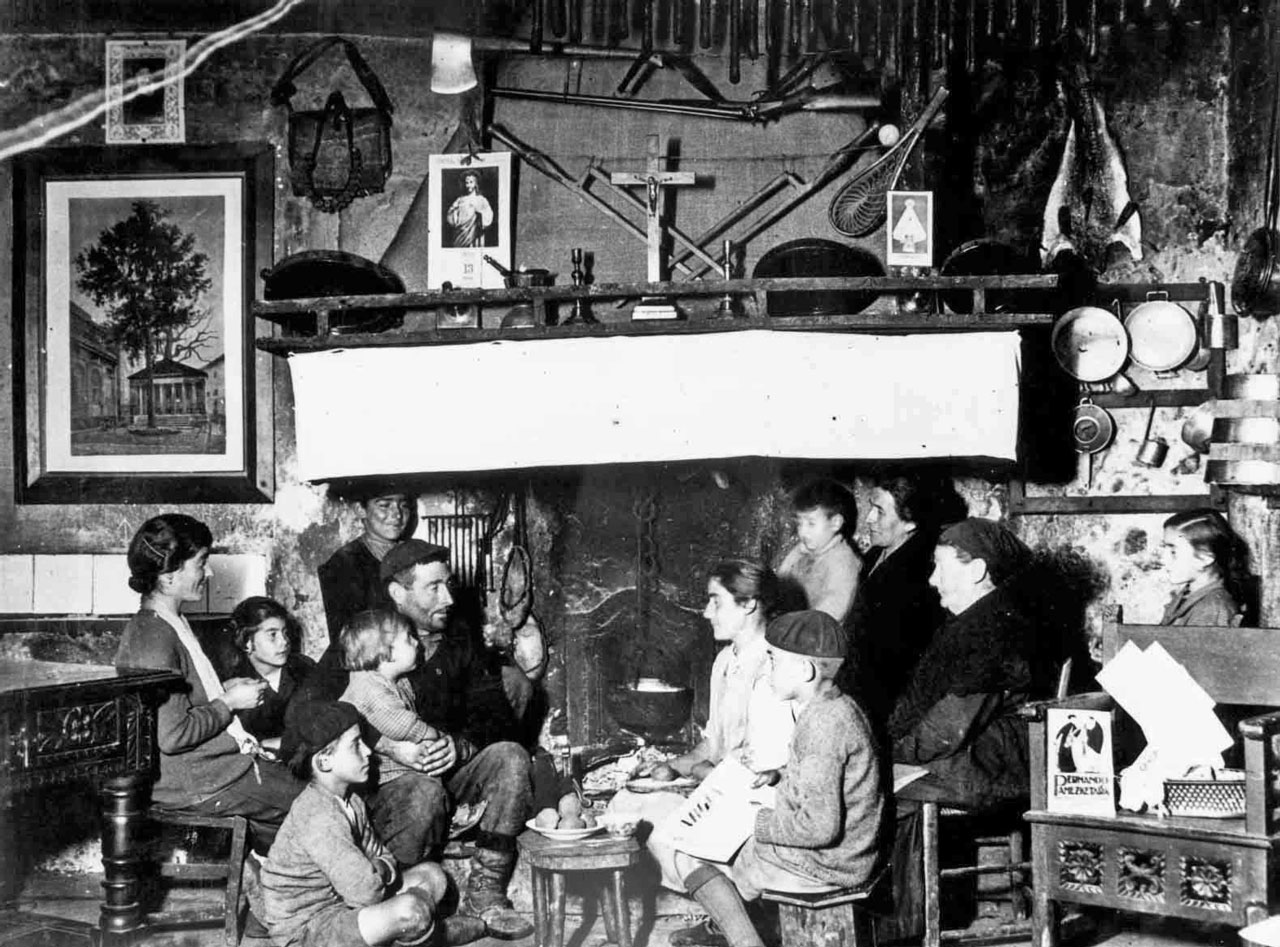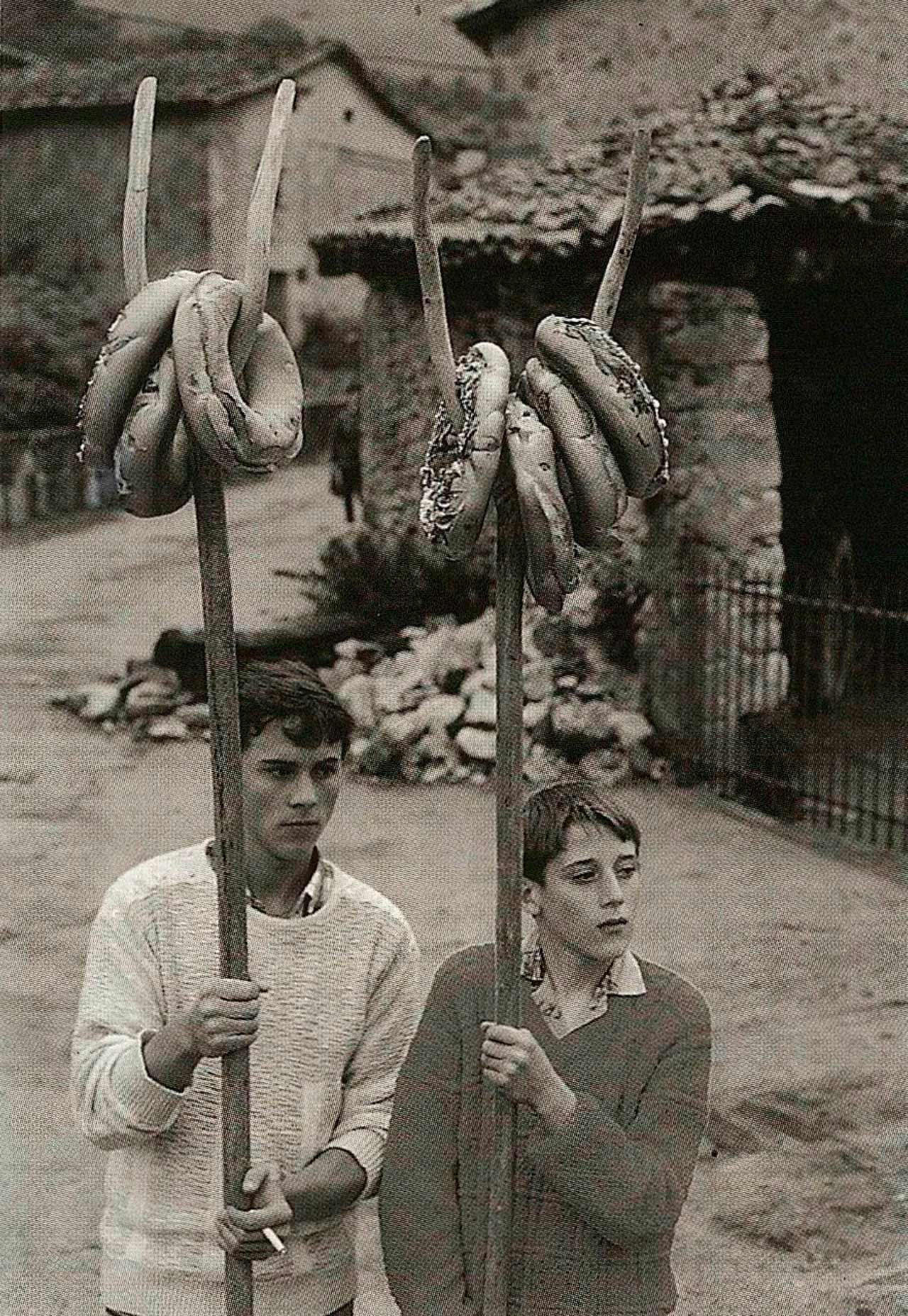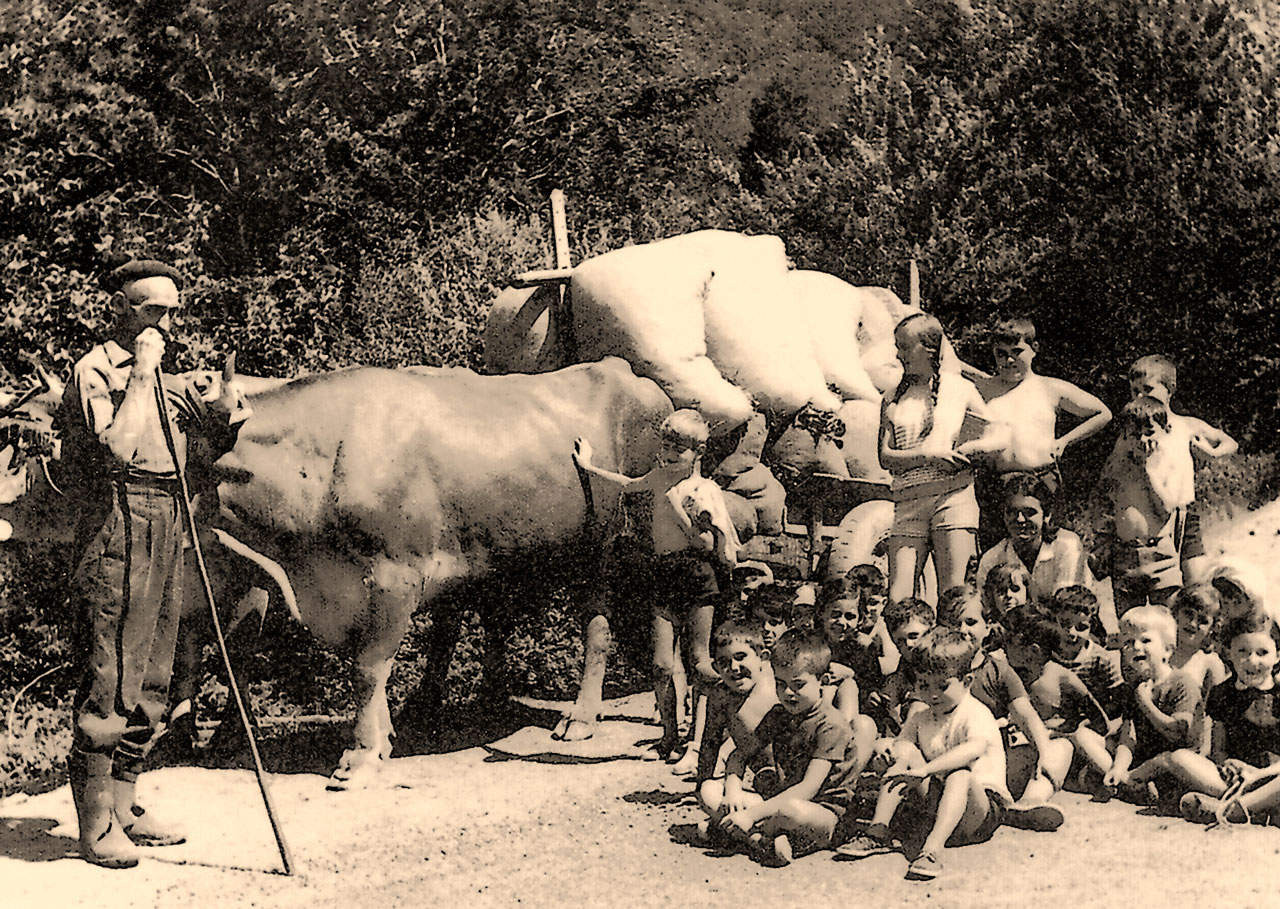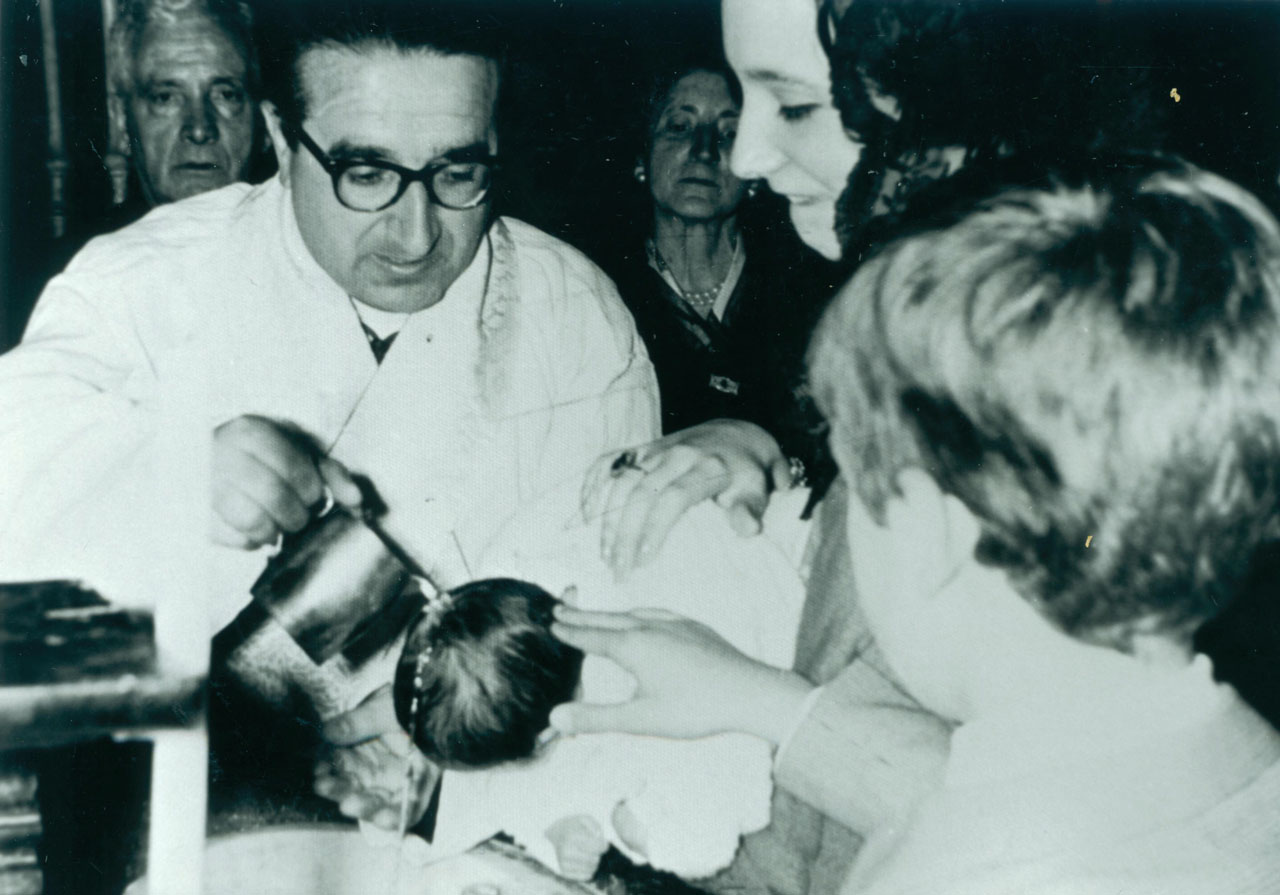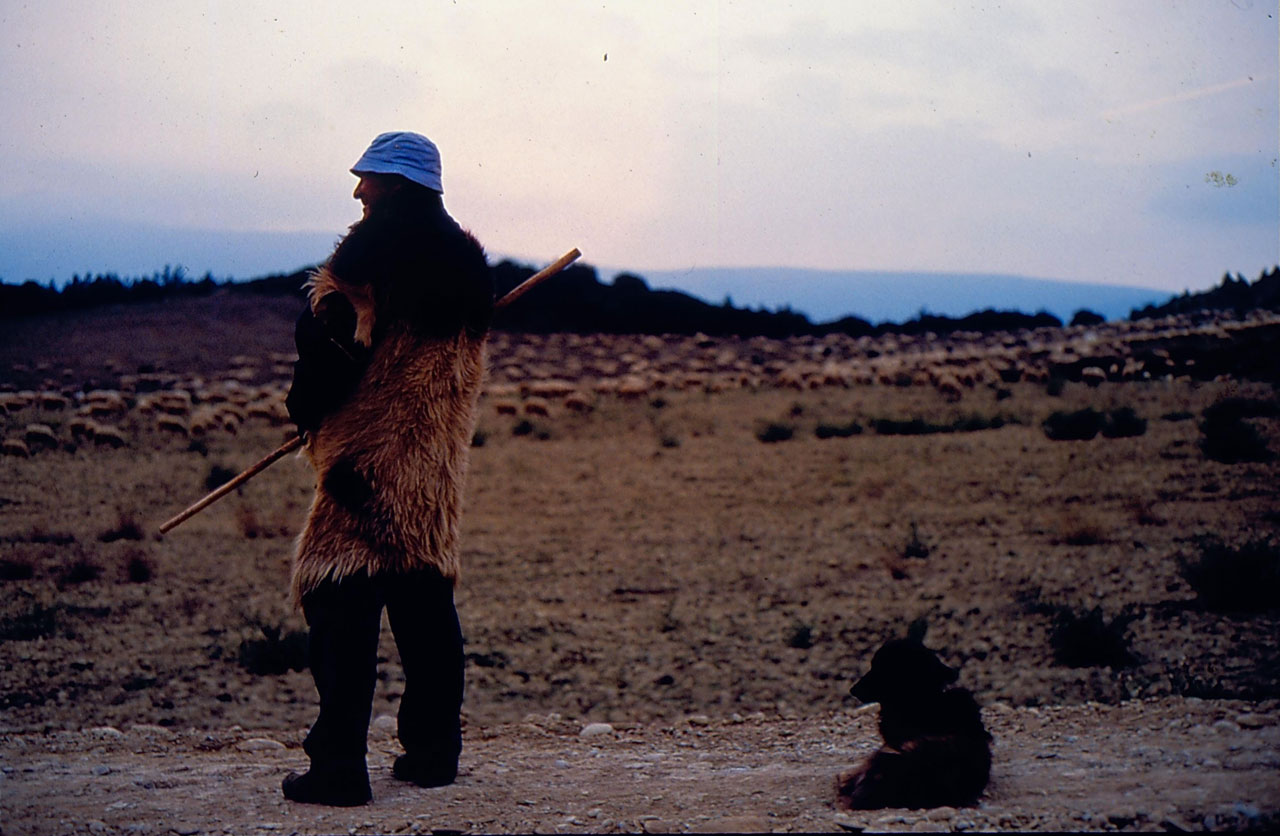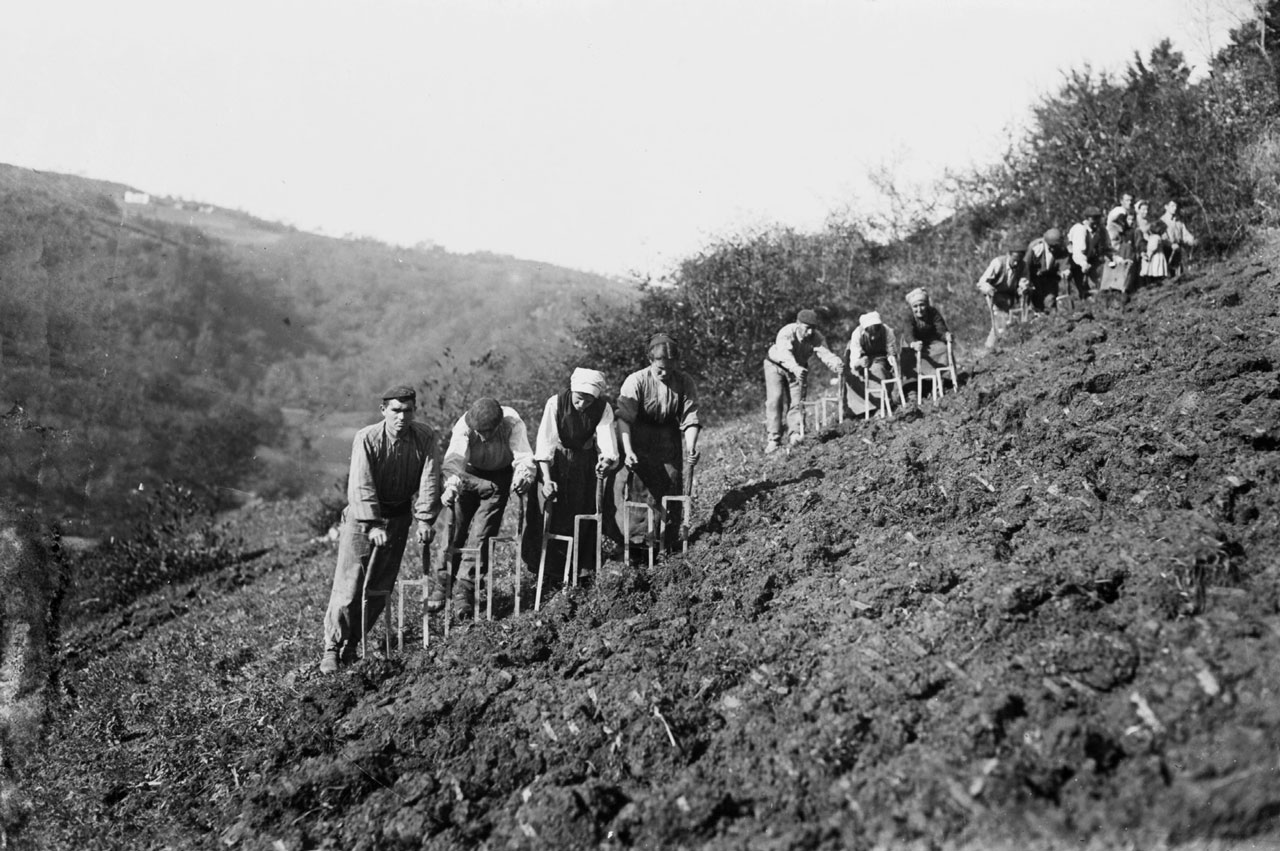Diferencia entre revisiones de «Main Page/en»
De Atlas Etnográfico de Vasconia
| Línea 155: | Línea 155: | ||
| − | ====[/atlas/nacimiento/Familia-troncal-Castillo-Elejabeitia-1930.jpg|Nuclear family. Artea (B), c. 1930. Source: Labayru Fundazioa Photograhic Archive: Felipe Manterola Collection.|Any bachelor, or spinster, traditionally continued to be linked to the homestead and to be an integral part of the family.|| | + | ====[/atlas/nacimiento/Familia-troncal-Castillo-Elejabeitia-1930.jpg|Nuclear family. Artea (B), c. 1930. Source: Labayru Fundazioa Photograhic Archive: Felipe Manterola Collection.|Any bachelor, or spinster, traditionally continued to be linked to the homestead and to be an integral part of the family.||]==== |
| − | ====[/atlas/nacimiento/Seintzaina-Zeanuri-1924.jpg|Nursemaid. Zeanuri (B), 1924. Source: Labayru Fundazioa Photograhic Archive: Felipe Manterola Collection.|Until the mid-twentieth century women gave birth at home with the help of a midwife and women relatives and neighbours. Giving birth was almost exclusively a female domestic occasion exclusively concerning females.|| | + | ====[/atlas/nacimiento/Seintzaina-Zeanuri-1924.jpg|Nursemaid. Zeanuri (B), 1924. Source: Labayru Fundazioa Photograhic Archive: Felipe Manterola Collection.|Until the mid-twentieth century women gave birth at home with the help of a midwife and women relatives and neighbours. Giving birth was almost exclusively a female domestic occasion exclusively concerning females.||]==== |
| − | ====[/atlas/nacimiento/Mozas-en-el-paseo-Aoiz-1950.jpg|Promenading. Aoiz (N), 1950. Source: Pilar Sáez de Albéniz, Etniker Euskalerria Groups.|Neskazaharrak joaten dira <br />Madalenara, <br />santuari eskatzera <br />senar on bana. <br /><br />''Folk song''|| | + | ====[/atlas/nacimiento/Mozas-en-el-paseo-Aoiz-1950.jpg|Promenading. Aoiz (N), 1950. Source: Pilar Sáez de Albéniz, Etniker Euskalerria Groups.|Neskazaharrak joaten dira <br />Madalenara, <br />santuari eskatzera <br />senar on bana. <br /><br />''Folk song''||]==== |
| − | ====[/atlas/nacimiento/Despedida-de-soltera-Durango-1960.jpg|Single farewell. Durango (B), 1960. Source: Gurutzi Arregi, Etniker Euskalerria Groups.|The transfer of the chattels was a ritualised act of great importance as it marked the entry of the new spouse in the home, ''etxe-sartzea''.|| | + | ====[/atlas/nacimiento/Despedida-de-soltera-Durango-1960.jpg|Single farewell. Durango (B), 1960. Source: Gurutzi Arregi, Etniker Euskalerria Groups.|The transfer of the chattels was a ritualised act of great importance as it marked the entry of the new spouse in the home, ''etxe-sartzea''.||]==== |
| − | ====[/atlas/nacimiento/Bautismo-Bilbao.jpg|Baptism. Bilbao. Source: Edurne Romarate, Etniker Euskalerria Groups.|After giving birth, women would remain confined for a period that ended with the rite of being churched, ''elizan sartzea''.|| | + | ====[/atlas/nacimiento/Bautismo-Bilbao.jpg|Baptism. Bilbao. Source: Edurne Romarate, Etniker Euskalerria Groups.|After giving birth, women would remain confined for a period that ended with the rite of being churched, ''elizan sartzea''.||]==== |
| − | ====[/atlas/nacimiento/Etxebarri-1968.jpg|Etxebarri (B), 1968. Source: Edurne Romarate, Etniker Euskalerria Groups.|Maritxu-teilatuko, <br />gona gorriduna, <br />eutsi hagin zaharra <br />ta ekarzu barria. <br /><br />''Popular recitation''|| | + | ====[/atlas/nacimiento/Etxebarri-1968.jpg|Etxebarri (B), 1968. Source: Edurne Romarate, Etniker Euskalerria Groups.|Maritxu-teilatuko, <br />gona gorriduna, <br />eutsi hagin zaharra <br />ta ekarzu barria. <br /><br />''Popular recitation''||]==== |
| − | ====[/atlas/nacimiento/Entrada-en-el-templo-Getxo-1996.jpg|Bride’s entrance in church. Getxo (B), 1996. Source: Labayru Fundazioa Photograhic Archive.|Ezkon urte, ero urte. <br />''People go crazy in the year they wed.''|| | + | ====[/atlas/nacimiento/Entrada-en-el-templo-Getxo-1996.jpg|Bride’s entrance in church. Getxo (B), 1996. Source: Labayru Fundazioa Photograhic Archive.|Ezkon urte, ero urte. <br />''People go crazy in the year they wed.''||]==== |
| − | ====[/atlas/nacimiento/Mozas-en-el-paseo-Aoiz-1950.jpg|Offering to the departed. Donostia, 1958. Source: Segundo Oar-Arteta, Etniker Euskalerria Groups.|Ezkonberri, etxe berri. <br />''A married person wants a house.''|| | + | ====[/atlas/nacimiento/Mozas-en-el-paseo-Aoiz-1950.jpg|Offering to the departed. Donostia, 1958. Source: Segundo Oar-Arteta, Etniker Euskalerria Groups.|Ezkonberri, etxe berri. <br />''A married person wants a house.''||]==== |
| − | ====[/atlas/nacimiento/Urduliz-1984.jpg|Urduliz (B), 1984. Source: Akaitze Kamiruaga, Etniker Euskalerria Groups.|Haurrak negarrik ez, titirik ez. <br />''A baby who does not cry, does not suckle.''|| | + | ====[/atlas/nacimiento/Urduliz-1984.jpg|Urduliz (B), 1984. Source: Akaitze Kamiruaga, Etniker Euskalerria Groups.|Haurrak negarrik ez, titirik ez. <br />''A baby who does not cry, does not suckle.''||]==== |
| − | ====[/atlas/nacimiento/Boloak-Zerain-1970.jpg|Baptism celebration. Zerain (G), 1970. Source: Karmele Goñi, Etniker Euskalerria Groups.|Haurraren jaiotza, etxerako poza. <br />''A house without children is a flowerpot without flowers.''|| | + | ====[/atlas/nacimiento/Boloak-Zerain-1970.jpg|Baptism celebration. Zerain (G), 1970. Source: Karmele Goñi, Etniker Euskalerria Groups.|Haurraren jaiotza, etxerako poza. <br />''A house without children is a flowerpot without flowers.''||]==== |
| − | ====[/atlas/nacimiento/Bilbao-1995.jpg|Bilbao, 1995. Source: Asier Astigarraga’s private archive.|Charms, ''kutunak'', were attached to children’s clothes and were said to protect them from the evil eye.|| | + | ====[/atlas/nacimiento/Bilbao-1995.jpg|Bilbao, 1995. Source: Asier Astigarraga’s private archive.|Charms, ''kutunak'', were attached to children’s clothes and were said to protect them from the evil eye.||]==== |
| − | ====[/atlas/nacimiento/Pasacalles-Sanguesa-1960.jpg|Passacaglia. Sangüesa (N), c. 1960. Source: Juan Cruz Labeaga, Etniker Euskalerria Groups.|Gazteak, badakizue <br />zelan dantzan egin: <br />burua gora-gora <br />ta kaderai eragin. <br /><br />''Folk verse''|| | + | ====[/atlas/nacimiento/Pasacalles-Sanguesa-1960.jpg|Passacaglia. Sangüesa (N), c. 1960. Source: Juan Cruz Labeaga, Etniker Euskalerria Groups.|Gazteak, badakizue <br />zelan dantzan egin: <br />burua gora-gora <br />ta kaderai eragin. <br /><br />''Folk verse''||]==== |
Revisión del 15:01 10 feb 2020
House and Family in the Basque Country


House and Family in the Basque Country
Gure etxean sua batzen, gure etxean aingeruak sartzen. Angels dance happily in a clean house.
Family Diet in the Basque Country


Family Diet in the Basque Country
Children’s Games in the Basque Country


Children’s Games in the Basque Country
Txori-ikasten They played looking for birds’ nests and thus learnt about their habits, their songs, the way the nests were built…
Traditional Medicine in the Basque Country


Traditional Medicine in the Basque Country
Baratxuria, hamalau gaitzen kontra. Garlic cures all ills.
Rites from Birth to Marriage in the Basque Country


Rites from Birth to Marriage in the Basque Country
After giving birth, women would remain confined for a period that ended with the rite of being churched, elizan sartzea.
Funeral Rites in the Basque Country


Funeral Rites in the Basque Country
There were specific paths to carry the corpse from the house of the deceased to the church and the cemetery.
Herder and dog. Droveway of the Roncalese (N), 1996. Source: Iñaki San Miguel, Etniker Euskalerria Groups.
Livestock Farming and Shepherding in the Basque Country


Livestock Farming and Shepherding in the Basque Country
The introduction of sheepdogs meant they replaced the zagales, young children who had been in charge of herding the flock up to then.
Agriculture in the Basque Country


Agriculture in the Basque Country
Spades, ploughs, rakes, sickles, scythes and threshers were the essential tools for agricultural work.
